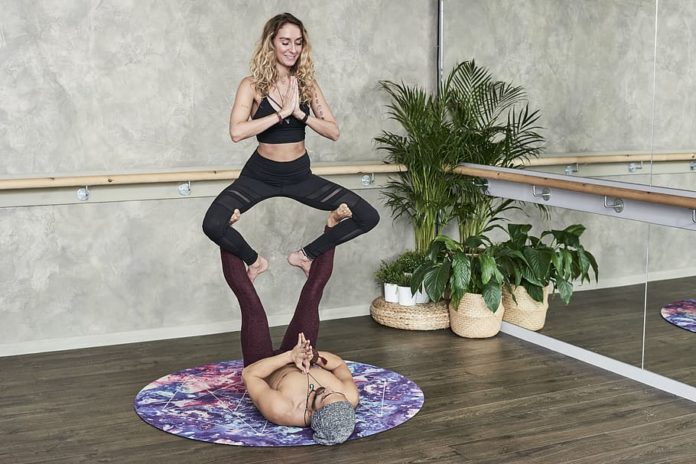Though a combination of yoga and Thai massage, Acro-yoga also has strong ties to gymnastics. A partner is needed to do Acro-yoga, as most positions require a base and a flier (for beginners there is often a third friend who acts as a spotter).
The base is more connected to the ground, and is often laying with full back torso contacting the earth. This creates bone-stacking, which allows the greatest support for the flier. The usual points of contact between the base and flier are hips, feet, and hands. The base grounds the flier, who is elevated and moves dynamically through yoga poses. Both the base and flier need confidence and core strength to succeed in acro-yoga. If you are using a spotter, it is his or her job to ensure the safe landings of the flier, and to make recommendations for alterations if they see a way to improve form.
Acro-yoga classes are begun with a circle ceremony and round of warm-up asanas (individual yoga flows). After the warm up participants move to partner work, where the two mirror each other in asanas, then spot each other for inversions. Once they’ve gone through these final warm-up steps, class moves to the acrobatics and flying. Beginning with dynamic acrobatics, both partners have some contact with the floor. Class then progress to flying, where the base is the sole support of the flier. There is almost always a spotter used for the final flight. Class is completed with calming Thai Massage.
Article Source: http://EzineArticles.com/3661056












